How to water a cactus?
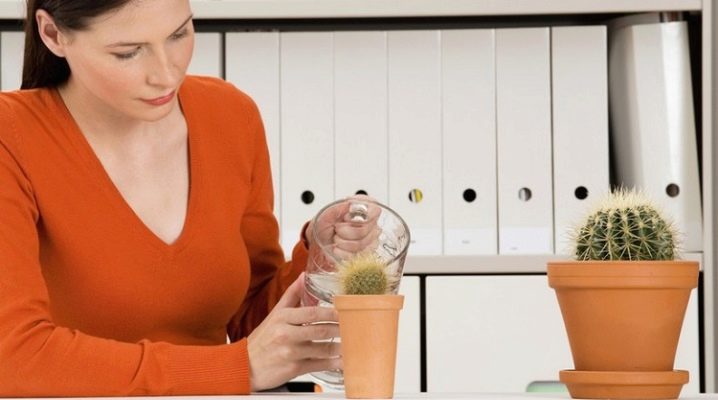
Cactus is a desert hermit living among sand dunes under the blazing sun. Its hybrid variants have long settled on apartment windowsills, and despite the fact that the ancestor of the home flower cactus is a desert inhabitant, like all plants, it needs water, and therefore every cactus grower should know the rules for watering it.
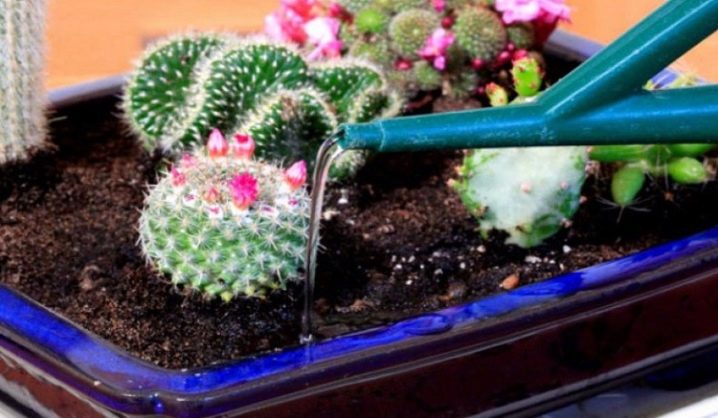
General rules
Cacti are completely unpretentious plants in their care. They are undemanding, as evidenced by their habitat. But this does not mean at all that, having planted an indoor cactus, you can forget about it, and only occasionally water it. It grows in the desert, and, therefore, the last thing a cactus needs is water. But this is a common misconception.
Cacti, like all plants, simply need water, and any cactus grower knows about this, so he carefully looks after his brainchild, lovingly watering it according to a strictly defined schedule. A cactus, like a sponge, absorbs the moisture presented by the owner, and then, like an economical housewife, gradually spends it. Watering cacti is one of the most important items on the list of recommendations for the care of a thorny plant.
When watering a cactus, you should always remember the main rule: it is better to underfill than to overfill. Excess water displaces air from the soil, which inhibits the development of fungus and other bacteria.
The Schlumberger cactus is probably the only one of all the representatives of succulents (plants that store water in their body) that loves abundant watering.
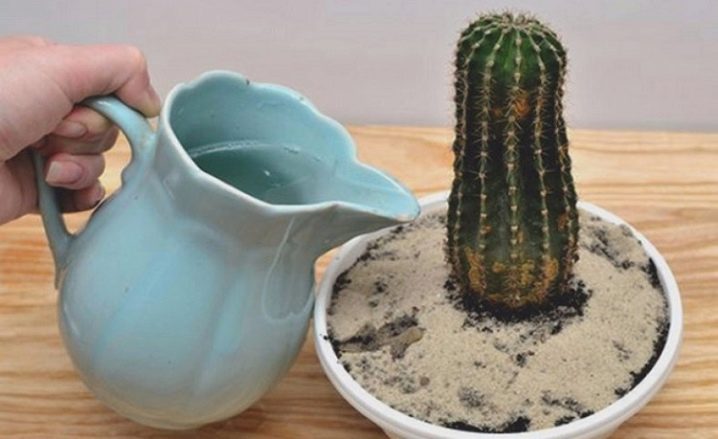
Many people wonder what kind of water to irrigate the soil under the cacti. Experts advise using either boiled or distilled water for irrigation. Melt water is also suitable for irrigation. Hard water is not suitable for irrigating the soil, so it is either passed through a filter to remove chlorine, or a little peat is added to it. The appearance of a white coating at the base of the trunk indicates that the water used for irrigation is not suitable.
The temperature of the water used for irrigation may vary depending on the season., and if in summer watering is carried out with water with a temperature of +22.25 degrees, then in the cold months it is advised to heat it up to 45 degrees.
The process of watering is not familiar to everyone, and only true cactus growers know that it is impossible to get water on the trunk of a plant during watering. It is correct to water only the soil, from which the cactus then picks up moisture.
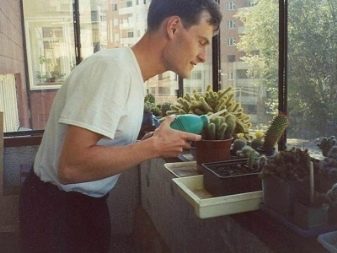
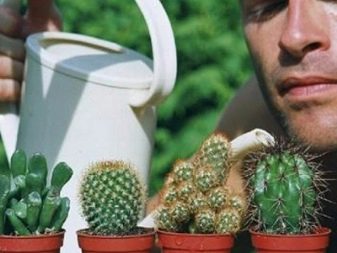
Watering the plant in the form of spraying is permissible for cacti, only during this procedure it is necessary to direct the tip not to the plant itself, but up above it, so that small drops fall on the cactus in the form of dew. Spraying succulents in a cool room is prohibited.
With the help of watering, cactus growers not only nourish the plant, but also give their appearance a creativity in the form of colored needles. This decorating technique is not used by everyone, but this type of watering takes place, and is quite popular in the circles of cactus growers. To dye the needles of the plant, water is used in which various food colors are dissolved.
It is important that the paint is food grade and free of various kinds of harmful impurities.
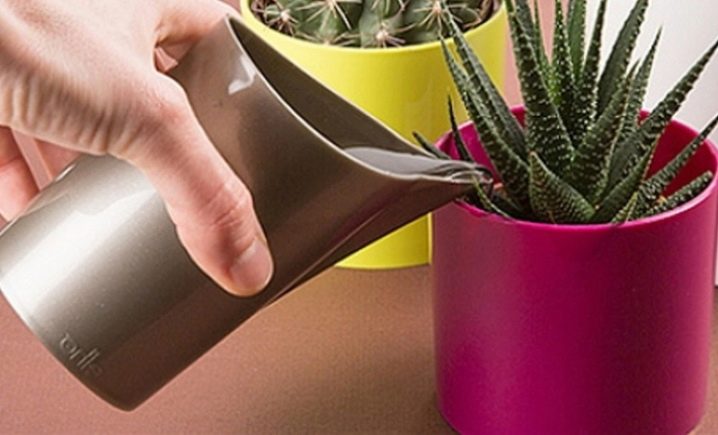
Watering methods
It would seem that watering a plant is the most common thing, and only a few people know that there are 2 options for watering - from above, when water is poured directly from a watering can onto the soil adjacent to the plant, and from below or from a pallet. In the latter case, water is poured into a container under the pot so that the cactus itself takes the required amount of moisture from it.Florists use both options, and beginners are advised to use the first, and old-timers in the field of floriculture - the second. Each of the presented watering methods has both proven advantages and disadvantages.

Above
The most common way to moisten the soil is by watering from above. In this case, it is worth recalling once again that it is impossible to wet the plant during watering. It is necessary to moisten only the soil in which the cactus grows, and it is better to moisten the entire area at once, and not several times little by little. So, if the soil is partially moistened, the water will evaporate before reaching the roots of the cactus. Such watering will be absolutely useless, and the roots will not receive the moisture they need.
If water is collected in the pan after watering, it must be poured out, as excessive moisture negatively affects the plant. Such watering is optimal for beginner flower growers.
With this option of humidification, the amount of water is strictly dosed, and the possibility of waterlogging of the cactus is minimized.
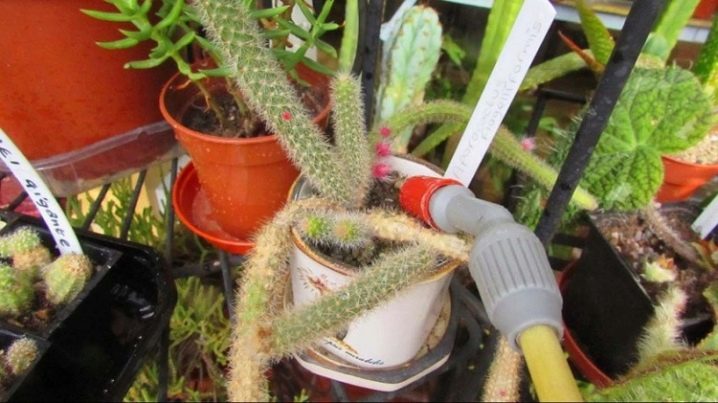
Through the pallet
The best option, when watering the cactus is most effective, is watering in the pan where the pot is. Thus, the water slowly penetrates into the soil and nourishes the roots of the plant, which are just at the cactus at the very bottom of the pot. Thus, the plant itself draws moisture from the pallet, and waterlogging of the soil with this method of irrigation is excluded.
The advantage of this watering is the fact that the roots of the plant are moistened first.
The disadvantage of this option is the difficulty in controlling the amount of liquid consumed by the plant, therefore, only professional cactus growers are advised to water the cactus in this way.
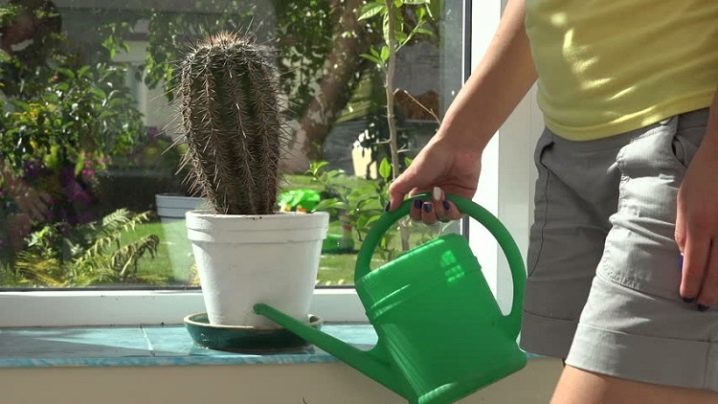
Watering time and frequency
The frequency of watering and the time of this procedure depends on the time of day and weather conditions outside the window.
If it is cool and cloudy outside, water the cactus in the morning. In hot weather, the soil under the cactus is moistened in the evening. The semantic background of such a graph is quite logical. Watering the plant in the summer in the morning, all the moisture that got into the soil will not have time to nourish the roots and will evaporate under the influence of high temperatures.
Watering the same cactus in the summer in the evening, the florist makes it possible for the water to reach the very bottom, where the most important "organs" of the thorny plant are located.
In the hot months, the cactus is watered almost every other day. In a cool summer, the soil is irrigated once every 6 days. In winter, the plant is "sleeping", so watering is reduced to 1 time in 14 days. If the winter is frosty, the cactus is watered once a month. In spring and autumn, the frequency of watering depends on the humidity of the air.
With its average indicator, watering is carried out once a week.
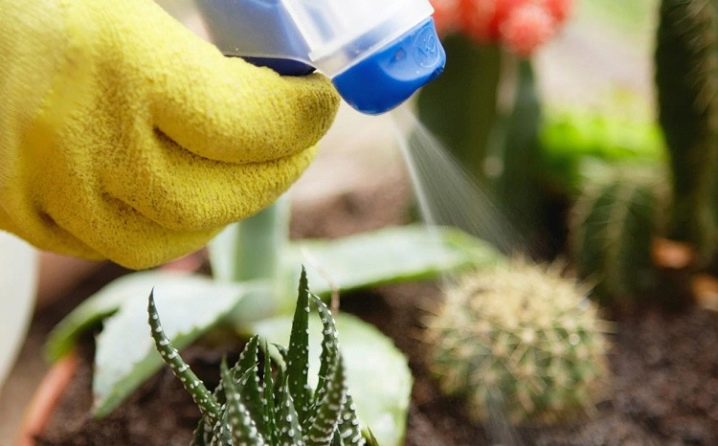
If the air in the apartment in winter is rather humid, then the cactus is not watered until the temperature outside the window begins to rise.
The frequency of watering also depends on the location of the pot. On sunny southern windowsills, succulents are watered more often. On the shady, northern - less often.
The material of the pot in which the cactus grows can also determine the watering schedule. Plastic pots retain water, and the cactus is watered in them less often than the same species, but in ceramic "houses".
A completely different watering schedule for flowering cacti. During the appearance of flowers, the need for water in a cactus arises during the flowering period. The plant needs a lot of strength to bloom the buds, and the plant really needs water at this time. But it is still not worth pouring it, otherwise the cactus will quickly shed its buds.
Many growers are wondering what to do if a cactus bloomed in winter, because in winter cacti are not watered.
It is not easy for a beginner to deal with such a situation, because urgent measures should be taken: either to preserve the bud, or to remove it.
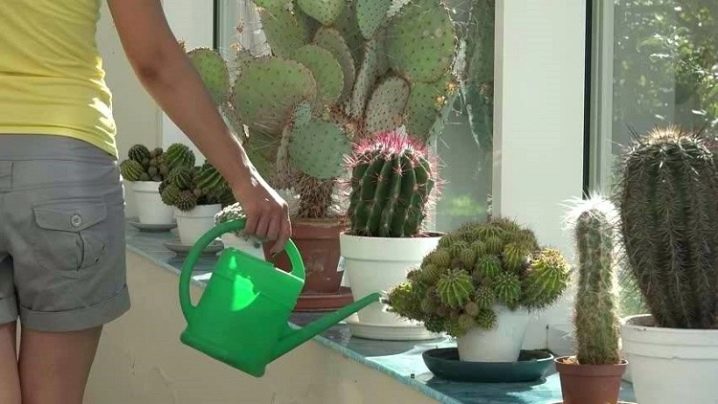
The flower needs water during the flowering period, but watering it in the cold months, when there is a possibility of various kinds of diseases, is also dangerous. In this case, the flower can be transferred to a drier and warmer place, and water can be started according to the summer scheme.
Blooming an adult plant in winter will not require watering if it is healthy itself.
A young, weak, still unvaccinated plant reacts in a completely different way to flowering. It risks not only getting sick, but also dying, and therefore it is necessary to remove the flower, no matter how beautiful it is. Thus, you can save the life of a cactus, so that later it, having got stronger, will please the owner next year with new no less beautiful flowers.
The growing season and active growth of the cactus also encourages the grower to water the plant more often.
This phase in cacti occurs in the spring months, as well as at the beginning of the summer period.
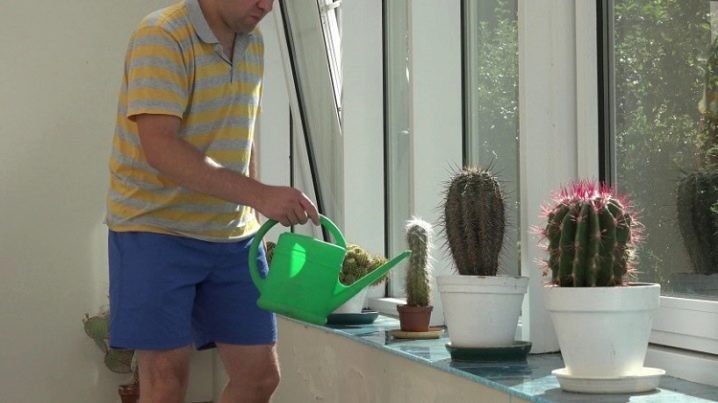
It is necessary to spray a blooming cactus very carefully - if suddenly cold drops fall on the flower, the cactus will immediately drop the bud. Warm water in the spray gun helps the droplets cool down quickly when they are sprayed. In order not to risk beautiful flowers, professionals advise to postpone such procedures, and start spraying after flowering.
Transplanting cacti also affects the watering regime. After transplanting a large cactus, it is not watered for another whole week, or even all 2 weeks. If a small cactus was transplanted, then it can be watered already on the fourth day after transplantation.
When watering, it is worth considering the type of plant, which directly affects the amount of fluid consumed.
For example, tropical cacti, the so-called epiphytes, which grow on trees and live in forests, need more moisture. This species includes, for example, the Ripsalidopsis cactus, the watering of which does not stop even in December.
In the first month of winter, it is watered once every 7 days, in more frosty months - once every 2 weeks.
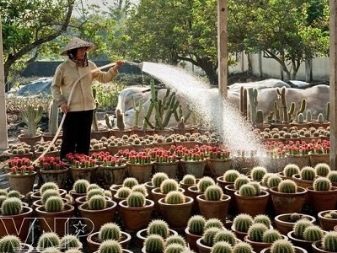

Ariocarpus is a type of desert cactus that is completely indifferent to water, except for the growth period, which occurs in early autumn. During this period, it is watered once every 20 days. During the summer months, watering is carried out only once, and in winter the plant hibernates, and it is not disturbed at all.
Parody cactus also dislikes wet soil. During flowering, the plant is watered with a beautiful red and yellow color every 15 days. Winter and autumn go by with little or no water. In cold weather, watering is carried out once a month.
The prickly pear cactus is also moistened only in the summer months, and then very rarely, only once a month. In winter, prickly pear does not require moisture at all.
Inhabitants of rocky mountains are sunbathers, and they do not particularly like moisture. The ambient temperature in the winter months should be kept at around +8 degrees, and watering during this period is not carried out at all.
Summer irrigation is allowed once a month.
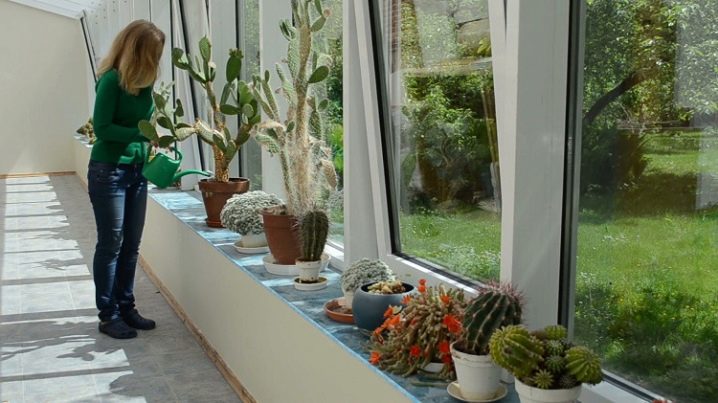
Tips & Tricks
Caring for cacti, undoubtedly, has its own subtleties. Watering the plant in this case is no exception. Each specialist has mandatory recommendations in stock, and they help both experienced florists and beginners.
- Few people know that cacti love water, but waterlogging is destructive for desert inhabitants.
- When watering, water should be poured slowly along the edge of the pot, thus moistening the soil, but not the trunk of the plant.
- Stagnant water should be removed by placing a drainage layer in the pot.
- The water temperature for moistening the soil should not be lower than 15 degrees.
- Before watering, a cactus is always judged by its appearance. With insufficient moisture, its ribs are more contoured. As soon as the cactus "gets drunk" of water, it seems to inflate, and the ribs are smoothed out.
- Dryness of the soil is also a clear indicator that the cactus is thirsty. But if the substrate is still wet, you shouldn't water it just because it's time to water. Waterlogging of the soil and, accordingly, the roots can easily provoke the appearance of fungus and other harmful bacteria.
- It is very easy to check whether the substrate is dry or not with the help of a long wooden stick, which is stuck into the soil under the cactus.And also its saturation with moisture can be checked after watering, about 30 minutes after the procedure.
- Spraying the plant can help wake up a cactus from hibernation. Humidified air can provoke the growth of new shoots and the transition to the active phase.

- Fine sprayers are not new to the experienced grower. They help humidify the air around the plant and, through micro-spraying, prevent the sun from burning the plant.
- Window sills in the southeast and southwest are the optimal residence for cacti. These representatives of the flora are very fond of the sun, which is very typical for the inhabitants of the sand dunes.
- Some growers expose indoor cacti in the summer to fresh air. It is not forbidden, but it is very important in this case to take care of covering the plants under an awning, as unplanned wetting can happen at any time.
- If in the room where the cacti are, in winter, there is high humidity and the temperature is low, then it is necessary either to dry the air by installing an air conditioner, or to transfer the plants. Watering them in such a room is prohibited. Otherwise, rot or other disease will appear on the plant.
- Experienced growers advise to loosen the soil to saturate it with oxygen the next day after watering to prevent root rotting.
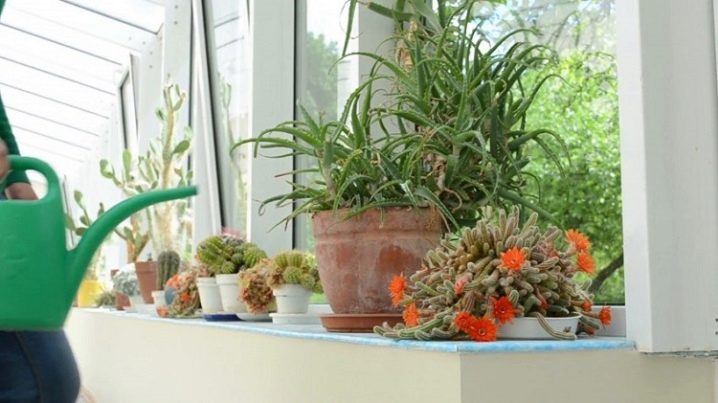
Undeniable help to flower growers in caring for succulents and other indoor plants during a long absence of the owner is provided by automatic irrigation devices.
Automatic irrigation devices allow you to supply the plant with water and maintain a normal level of soil moisture. Devices such as watering flasks, automatic pots are sold in specialized flower boutiques. In addition, automatic watering can be made by hand.
For the manufacture of such devices, the following improvised means are used:
- plastic bottles;
- pallets with expanded clay;
- wick;
- droppers (medical);
- plastic bag.
In any case, cacti are the most patient windowsill dwellers, and they will survive dry times better than others.
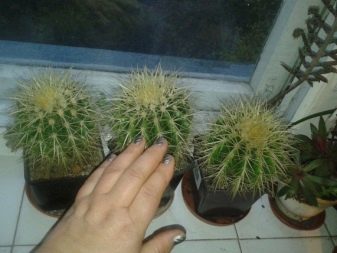
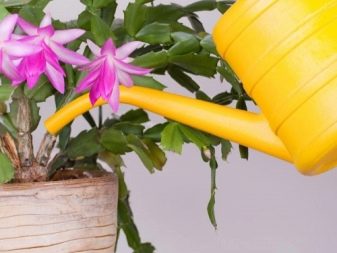
For information on how to care for cacti, see the video below.























































The comment was sent successfully.